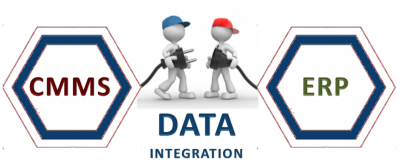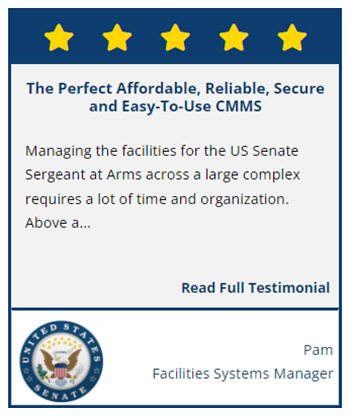 Every business strives for increased performance and higher productivity while maintaining operational costs.
Every business strives for increased performance and higher productivity while maintaining operational costs.
To increase business productivity, businesses must automate their workflows with cost-effective methods. Automation can help organizations reduce errors and spend less time on simple tasks like data entry and more time on complex tasks.
Organizations that use ERP (Enterprise Resource Planning) software to optimize operations frequently have challenges managing maintenance operations. ERPs, such as SAP, Microsoft Dynamics, and NetSuite, are useful tools for finance and human resource departments, but they lack the functionality and reporting benefits that maintenance departments require.
What is ERP?
Enterprise Resource Planning (ERP) tools are an integrated suite of business applications designed to centralize the majority of your back-office business processes, such as financials, sales, and operations. ERP can manage a wide range of company operations across every possible department, including accounting, billing and invoicing, business intelligence (BI) tools, customer relationship management (CRM), eCommerce platform, human resources (HR), inventory management, manufacturing resource planning (MRP), project management, and supply chain management.
ERP software helps organizations manage and automate many of the important functions and processes that are required to run a business. The goal of ERP is to provide a single, integrated view of all your internal workflows and customer data and processes across your organization so that decision-makers can have real-time visibility into the information they need to run the business effectively. This can help organizations to improve their operational efficiency, reduce costs, and make better-informed decisions.
What is CMMS Software?
CMMS stands for computerized maintenance management system and is designed for maintenance purposes, giving maintenance professionals the tools to help manage their operations and providing a defined system for documenting maintenance activities, managing the resources needed to complete maintenance jobs, and tracking the performance of the maintenance team.
ERP vs. CMMS
ERP software is a powerful tool for managing many aspects of a business but does not have maintenance management capabilities. While ERP systems can provide important information about inventory, finances, and other areas of the business, they are not specifically designed to manage maintenance operations. This is where Computerized Maintenance Management System (CMMS) software can help.
A CMMS is a specialized software solution that manages all aspects of maintenance operations, such as preventative maintenance, work orders, asset management, and more. Organizations can obtain access to a complete, real-time view of all maintenance operations by connecting a CMMS-API with an ERP system, allowing them to make educated decisions and increase the efficiency of their operations.
Integrating a CMMS with an ERP system, for example, can help organizations track maintenance expenses and inventory levels more effectively. It can also provide real-time data on asset health and performance, allowing organizations to prioritize maintenance tasks and avoid costly downtime. By integrating a CMMS-API with an ERP system, organizations can reduce the risk of errors and streamline the maintenance process, making it easier to manage maintenance operations and keep assets in top condition.
What is ERP Integration?
Through the application programming interface (API), software integration integrates ERP with one, two, or more software solutions, including those developed by separate developers, into a compatible business system. This is an extremely challenging procedure because each software manufacturer has their own methodology for how their program should work independently or with other compatible systems. ERP solutions that have been integrated can share corporate data without losing valuable information in the process.
What is an Application Programming Interface (API)?
eWorkOrders CMMS-API integration with ERP refers to the process of connecting different enterprise resource planning (ERP) systems or linking an ERP system with other software applications to share and exchange data. The goal of ERP integration is to create a seamless flow of information between different systems and applications, eliminating the need for manual data entry and reducing the risk of errors.
How CMMS-API and ERP Work Together
CMMS-API integration enables seamless integration between a Computerized Maintenance Management System (CMMS) and an Enterprise Resource Planning (ERP) system. The API acts as a bridge between the two systems, allowing the real-time exchange of data between them. This integration enables the ERP to access critical maintenance data from the CMMS, such as equipment maintenance records and spare parts inventory, and the CMMS to access important information from the ERP, such as financial data and supply chain information.
As an example, this diagram shows how eWorkOrders CMMS-API can be used to improve the parts purchasing process with an ERP software system.

- Using eWorkOrders CMMS, a manager creates a purchase order (PO) request for machine parts.
- Once the request has been approved, a program can get this data from the API and transfer the PO to the ERP software system.
- ERP receives the data from the eWorkOrders PO. The PO is confirmed and the order is automatically sent to the supplier. Once the parts are received, the data is sent back to eWorkOrders via the API.
- In eWorkOrders, the PO parts receipt is validated, recorded, and the parts inventory is automatically updated.
- Depending on your configuration some additional programming may be needed between the CMMS-API and ERP-API.
ERP: Quick, Easy, and Affordable Integration
Today, integration platforms, such as eWorkOrders CMMS-API, have done all the fine-tuning of the technology, to make integration easy and customizable to fit into an organization’s current and future needs. This application is scalable, fast, and affordable.
The Power of ERP and CMMS Integration
ERP and CMMS systems serve different purposes but when integrated, they provide users with a powerful tool to manage their organization in a centralized system. By integrating these two systems, organizations can bring together critical data and processes into one centralized platform, providing a complete view of the business and improving efficiency. This integration enables organizations to make informed decisions, automate tasks, reduce errors, and streamline operations, leading to improved performance, reduced costs, and increased customer satisfaction.
To give you a better idea of what both CMMS software and ERP software do, let’s compare their capabilities.
CMMS | ERP | |
| Focus Area | Focuses on maintenance | Covers multiple areas of operation |
Work Order Automation | Automates work order processes, along with reporting and invoicing | Encompasses payroll, invoicing, and reporting along with work order processes |
Reporting | Analyzes data about maintenance using reports | Analyzes data about the organization using reports |
Purchasing | Has purchase order capabilities | Tracks, stores, and analyzes accounting data |
Maintenance Work Orders\Requests | Has in-depth maintenance request management capabilities | Has some maintenance request management capabilities |
Employee Time Tracking | Contains maintenance employee records including skill level and pay rate | Contains Human Resources information such as compensation management, timekeeping, insurance information, emergency contacts, and benefits paperwork |
Asset Management | Has in-depth asset management functions | Has in-depth asset management functions as well as supply chain management functions |
| MRO Inventory Management | Provides MRO inventory planning as well as maintenance and other tasks monitoring in a manufacturing environment | Provides inventory planning beyond MRO product planning and production monitoring in manufacturing or other types of environments |
Benefits of Integration
Integrating a CMMS with an ERP system gives firms a unified platform to manage all areas of their business and maintenance operations, resulting in greater performance, increased efficiency, and cost savings. Some of the most common reasons organizations use a CMMS-API integration with ERP include:
Enhanced scalability: An API (Application Programming Interface) allows businesses to create custom applications and integrations that are tailored to their specific requirements, increasing scalability and flexibility.
Improved visibility: Integrating a CMMS with an ERP system gives a comprehensive and real-time view of all maintenance operations and business processes, allowing firms to make educated decisions.
Increased efficiency: Organizations can streamline their operations and reduce the risk of errors by automating several procedures, such as work order management and asset tracking. This leads to higher efficiency.
Improved asset performance: A CMMS interfaces with an ERP system to give real-time information about asset health and performance, allowing organizations to prioritize maintenance tasks and avoid costly downtime.
Cost savings: Integrating a CMMS with an ERP system can help organizations more effectively track maintenance expenses and reduce the risk of unplanned downtime, resulting in cost savings.
Improved customer satisfaction: Organizations can improve the efficiency of their maintenance operations and provide a better experience for maintenance employees by integrating a CMMS with an ERP system, leading to increased customer satisfaction.
Better decision-making: Integrating a CMMS with an ERP system gives firms a single platform for accessing essential data and information, enabling better-informed decision-making.
Final Thoughts
CMMS API integration can integrate your business processes by seamlessly linking your maintenance management system with other critical systems, such as your ERP or CRM. By linking your CMMS with other systems, you may avoid data duplication and inconsistencies, streamline workflows, and increase efficiency. With real-time access to data from all systems, you can make educated decisions, respond quickly to changing conditions, and improve overall business performance. A CMMS API interface also allows you to automate operations, reducing manual errors and freeing up time for other important duties. By unifying your business processes through CMMS API integration, you can achieve greater efficiency, improved data accuracy, and enhanced business performance.